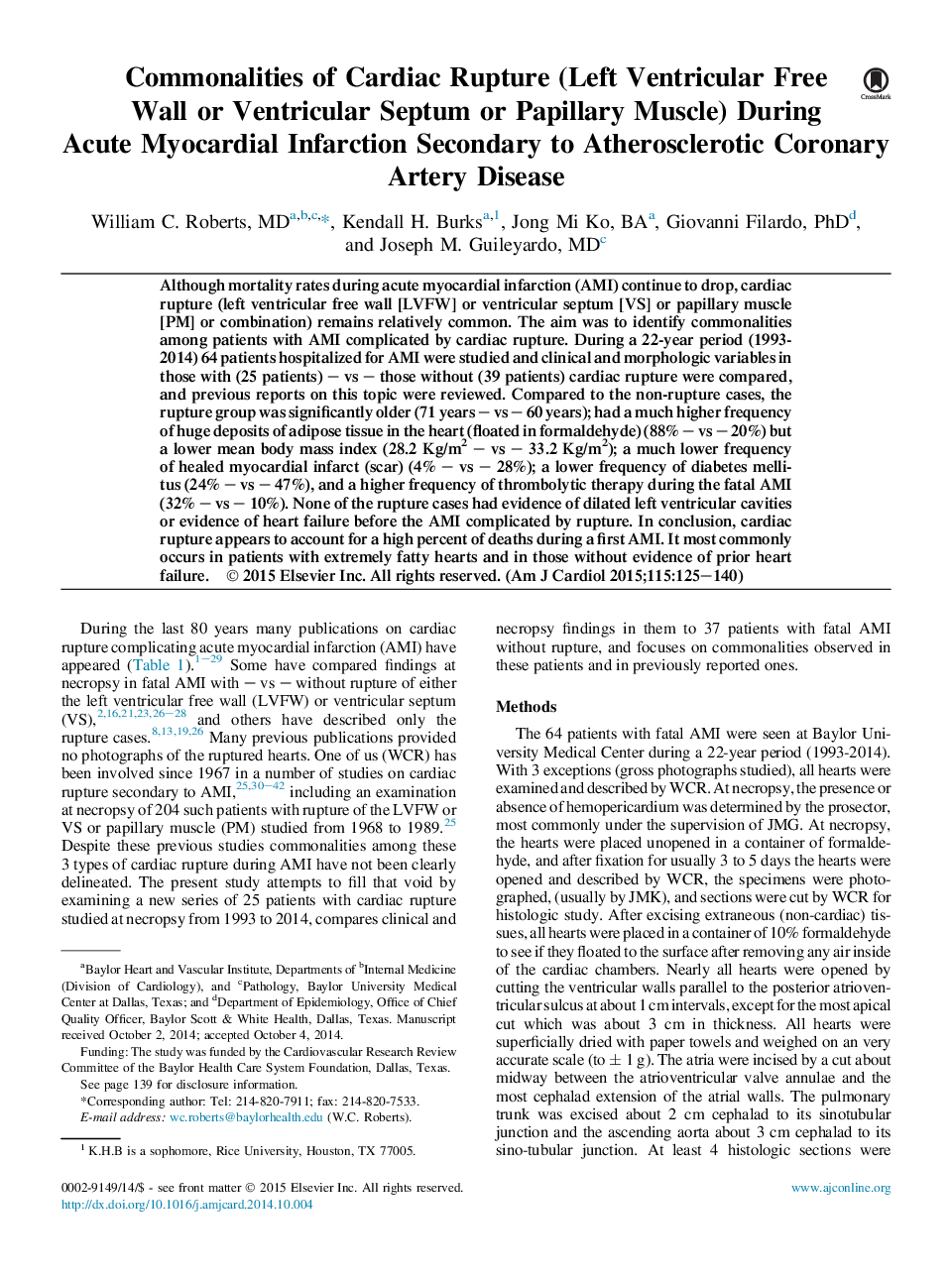| کد مقاله | کد نشریه | سال انتشار | مقاله انگلیسی | نسخه تمام متن |
|---|---|---|---|---|
| 2853729 | 1572150 | 2015 | 16 صفحه PDF | دانلود رایگان |
Although mortality rates during acute myocardial infarction (AMI) continue to drop, cardiac rupture (left ventricular free wall [LVFW] or ventricular septum [VS] or papillary muscle [PM] or combination) remains relatively common. The aim was to identify commonalities among patients with AMI complicated by cardiac rupture. During a 22-year period (1993-2014) 64 patients hospitalized for AMI were studied and clinical and morphologic variables in those with (25 patients) – vs – those without (39 patients) cardiac rupture were compared, and previous reports on this topic were reviewed. Compared to the non-rupture cases, the rupture group was significantly older (71 years – vs – 60 years); had a much higher frequency of huge deposits of adipose tissue in the heart (floated in formaldehyde) (88% – vs – 20%) but a lower mean body mass index (28.2 Kg/m2 – vs – 33.2 Kg/m2); a much lower frequency of healed myocardial infarct (scar) (4% – vs – 28%); a lower frequency of diabetes mellitus (24% – vs – 47%), and a higher frequency of thrombolytic therapy during the fatal AMI (32% – vs – 10%). None of the rupture cases had evidence of dilated left ventricular cavities or evidence of heart failure before the AMI complicated by rupture. In conclusion, cardiac rupture appears to account for a high percent of deaths during a first AMI. It most commonly occurs in patients with extremely fatty hearts and in those without evidence of prior heart failure.
Journal: The American Journal of Cardiology - Volume 115, Issue 1, 1 January 2015, Pages 125–140
